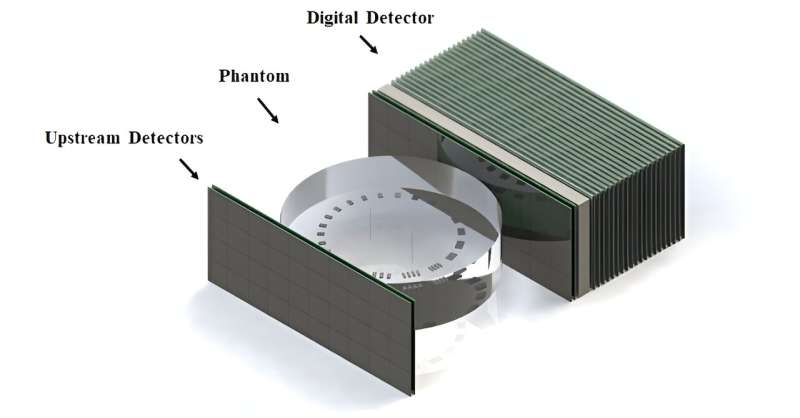This article has been reviewed according to Science X's editorial process and policies. Editors have highlighted the following attributes while ensuring the content's credibility:
fact-checked
trusted source
proofread
Novel pixel sensor-based image device enhances precision in ion therapy

By directly measuring relative stopping power (RSP) with ions, a pixel sensor-based Hi'CT with multi-layer structure reduces the risk of range uncertainty, a major contributor to dose imprecision in ion therapy. With enhanced high-precision imaging capabilities and a fully digital design, Hi'CT can be integrated into compact treatment room, ensuring efficient clinical pre-scanning and positioning verification.
This novel approach reduces safety margins, significantly improves treatment accuracy and ultimately enhances the patients' quality of life. The Hi'CT system heralds a promising future for the advancement of cancer treatment, providing new hope for more effective and precise radiotherapy. The study is published in the journal Nuclear Science and Techniques.
To fulfill the clinical demand for carbon ion therapy, this study presents the technical design of the Hi'CT system, which directly obtains precise estimates of carbon ion range, achieving a precise image guide to protect healthy tissues around the target. Instead of using conventional X-CT, Hi'CT does not rely on HU value conversion but directly uses the reconstructed clinical ion trajectories for imaging, enabling an accurate estimation of RSP.
In addition, several imaging algorithms are proposed for various clinical purposes, and the system employs the same therapeutic beam for imaging, holding the potential for real-time image-guided therapy in the future.
The Hi'CT system features a fully digital architecture with a compact length of approximately 10 cm, facilitating seamless integration into space-constrained heavy ion therapy devices. The core of Hi'CT is the digital segmented multi-layer detector, comprising upstream and downstream detectors, a compensator block, and sampling layers. This design accurately measures the endpoint of particle range near the Bragg peak with excellent detection efficiency. Its compact design allows for broader adaptability and easy integration, significant improving treatment qualities.
The Hi'CT system equips rapid imaging algorithms that do not require tracking process, eliminating the need for lengthy pre-scanning wait times. Fast acquisition of carbon ion CT images facilitates fast patient positioning verification. The Hi'CT system aims to achieve real-time image-guided during ion therapy. It is expected that the imaging time can be shortened to within three minutes in the future, substantially reducing off-target shift caused by organ motion and breathing movement.
More information: Yi-Lun Chen et al, Hi'CT: a pixel sensor-based device for ion tomography, Nuclear Science and Techniques (2023). DOI: 10.1007/s41365-023-01251-x




















